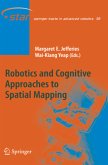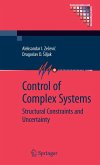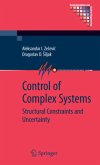The main objective of this book is to provide robotic researchers and developers with a reliable and authoritative source, meaningful and feasible developments as well as significance and impact of new problems in the field. The monograph emphasises all the implementation aspects related to major robotic subsystems, i.e. both technology structures and specific methodologies. The study of robotic subsystems aimed at the integration in a single complex system, with autonomous motion capabilities, represents the current frontier of scientific research in the field of robotics.
Robotics applications, initially developed for industrial and manufacturing contexts, are now strongly present in several elds. Besides well-known space and high-technology applications, robotics for every day life and medical s- vices is becoming more and more popular. As an example, robotic manipu- tors are particularly useful in surgery and radiation treatments, they could be employed for civil demining, for helping disabled people, and ultimately for domestic tasks, entertainment and education. Such a kind of robotic app- cations require the integration of many di erent skills. Autonomous vehicles and mobile robots in general must be integrated with articulated manipu- tors. Many robotic technologies (sensors, actuators and computing systems) must be properly used with speci c technologies (localisation, planning and control technologies). The task of designing robots for these applications is a hard challenge: a speci c competence in each area is demanded, in the e ort of a truly integrated multidisciplinary design.
Robotics applications, initially developed for industrial and manufacturing contexts, are now strongly present in several elds. Besides well-known space and high-technology applications, robotics for every day life and medical s- vices is becoming more and more popular. As an example, robotic manipu- tors are particularly useful in surgery and radiation treatments, they could be employed for civil demining, for helping disabled people, and ultimately for domestic tasks, entertainment and education. Such a kind of robotic app- cations require the integration of many di erent skills. Autonomous vehicles and mobile robots in general must be integrated with articulated manipu- tors. Many robotic technologies (sensors, actuators and computing systems) must be properly used with speci c technologies (localisation, planning and control technologies). The task of designing robots for these applications is a hard challenge: a speci c competence in each area is demanded, in the e ort of a truly integrated multidisciplinary design.








